| Solar eclipse of June 2, 2095 | |
|---|---|
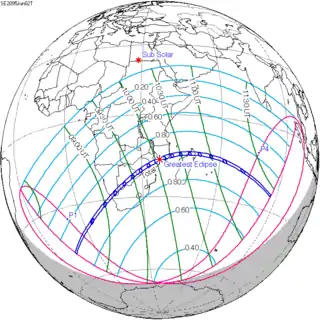 Map | |
| Type of eclipse | |
| Nature | Total |
| Gamma | −0.6396 |
| Magnitude | 1.0332 |
| Maximum eclipse | |
| Duration | 3m s |
| Coordinates | 16°42′S 37°12′E / 16.7°S 37.2°E |
| Max. width of band | 145 km (90 mi) |
| Times (UTC) | |
| Greatest eclipse | 10:07:40 |
| References | |
| Saros | 129 (56 of 80) |
| Catalog # (SE5000) | 9722 |
A total solar eclipse will occur on June 2, 2095. A solar eclipse occurs when the Moon passes between Earth and the Sun, thereby totally or partly obscuring the image of the Sun for a viewer on Earth. A total solar eclipse occurs when the Moon's apparent diameter is larger than the Sun's, blocking all direct sunlight, turning day into darkness. Totality occurs in a narrow path across Earth's surface, with the partial solar eclipse visible over a surrounding region thousands of kilometres wide.
Related eclipses
Solar eclipses 2094–2098
This eclipse is a member of a semester series. An eclipse in a semester series of solar eclipses repeats approximately every 177 days and 4 hours (a semester) at alternating nodes of the Moon's orbit.[1]
| 119 | June 13, 2094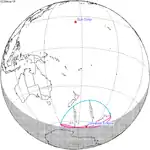 Partial |
124 | December 7, 2094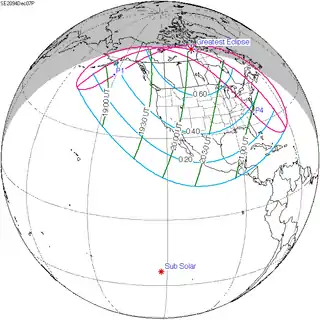 Partial |
| 129 | June 2, 2095 Total |
134 | November 27, 2095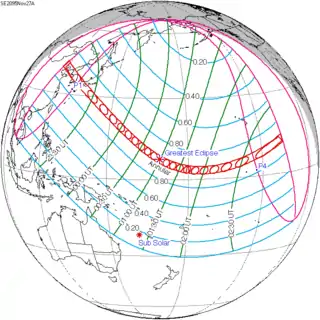 Annular |
| 139 | May 22, 2096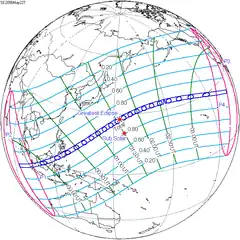 Total |
144 | November 15, 2096 Annular |
| 149 | May 11, 2097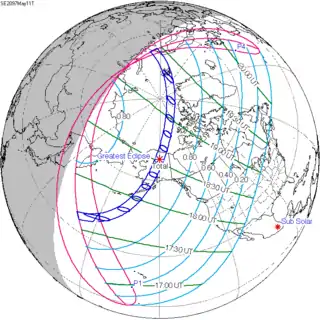 Total |
154 | November 4, 2097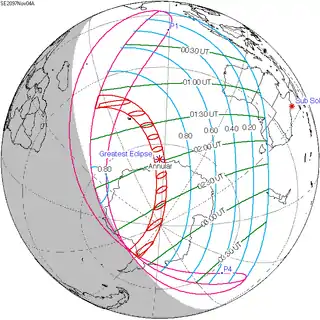 Annular |
| 164 | October 24, 2098 Partial |
Notes
- ↑ van Gent, R.H. "Solar- and Lunar-Eclipse Predictions from Antiquity to the Present". A Catalogue of Eclipse Cycles. Utrecht University. Retrieved 6 October 2018.
References
- Earth visibility chart and eclipse statistics Eclipse Predictions by Fred Espenak, NASA/GSFC
This article is issued from Wikipedia. The text is licensed under Creative Commons - Attribution - Sharealike. Additional terms may apply for the media files.
.jpg.webp)

